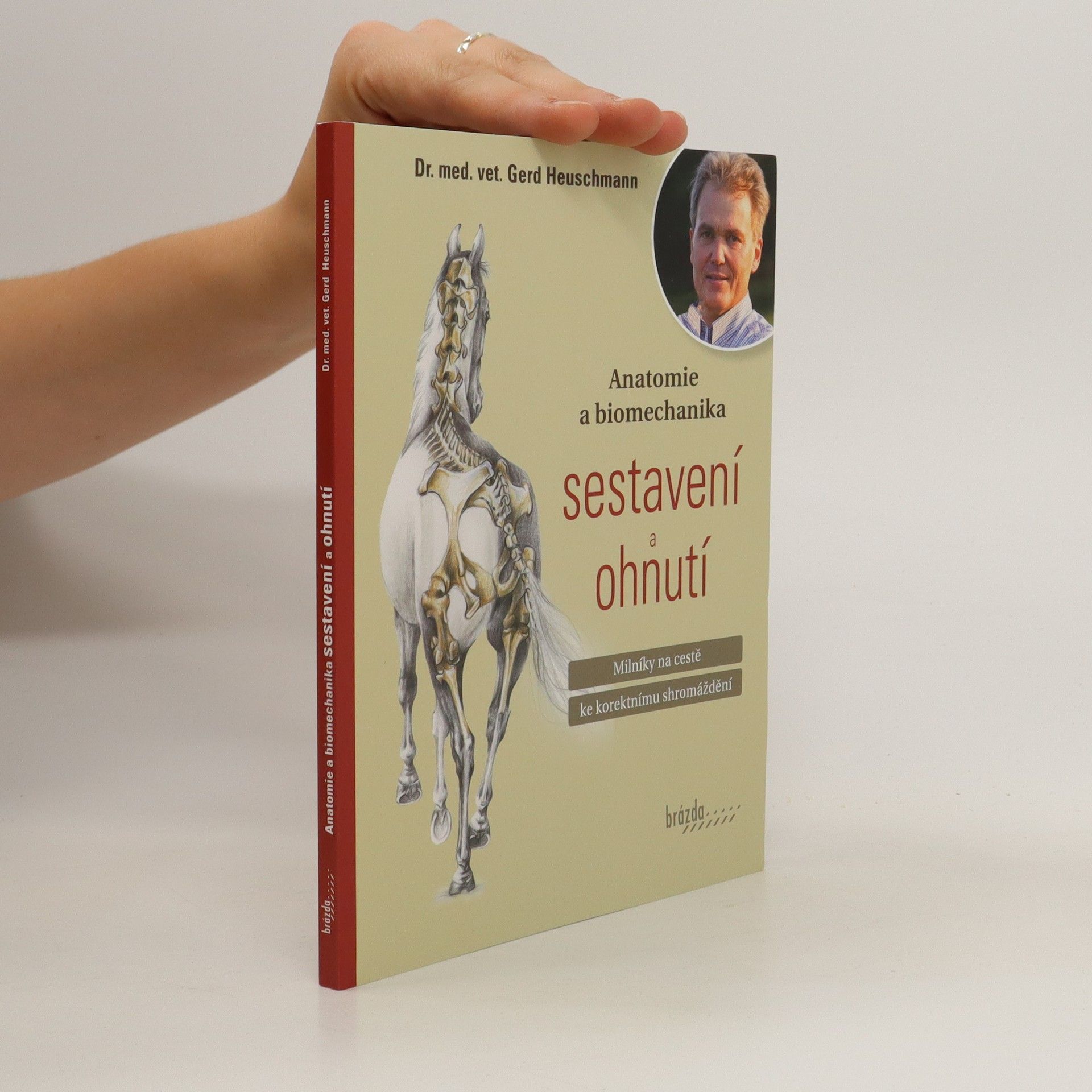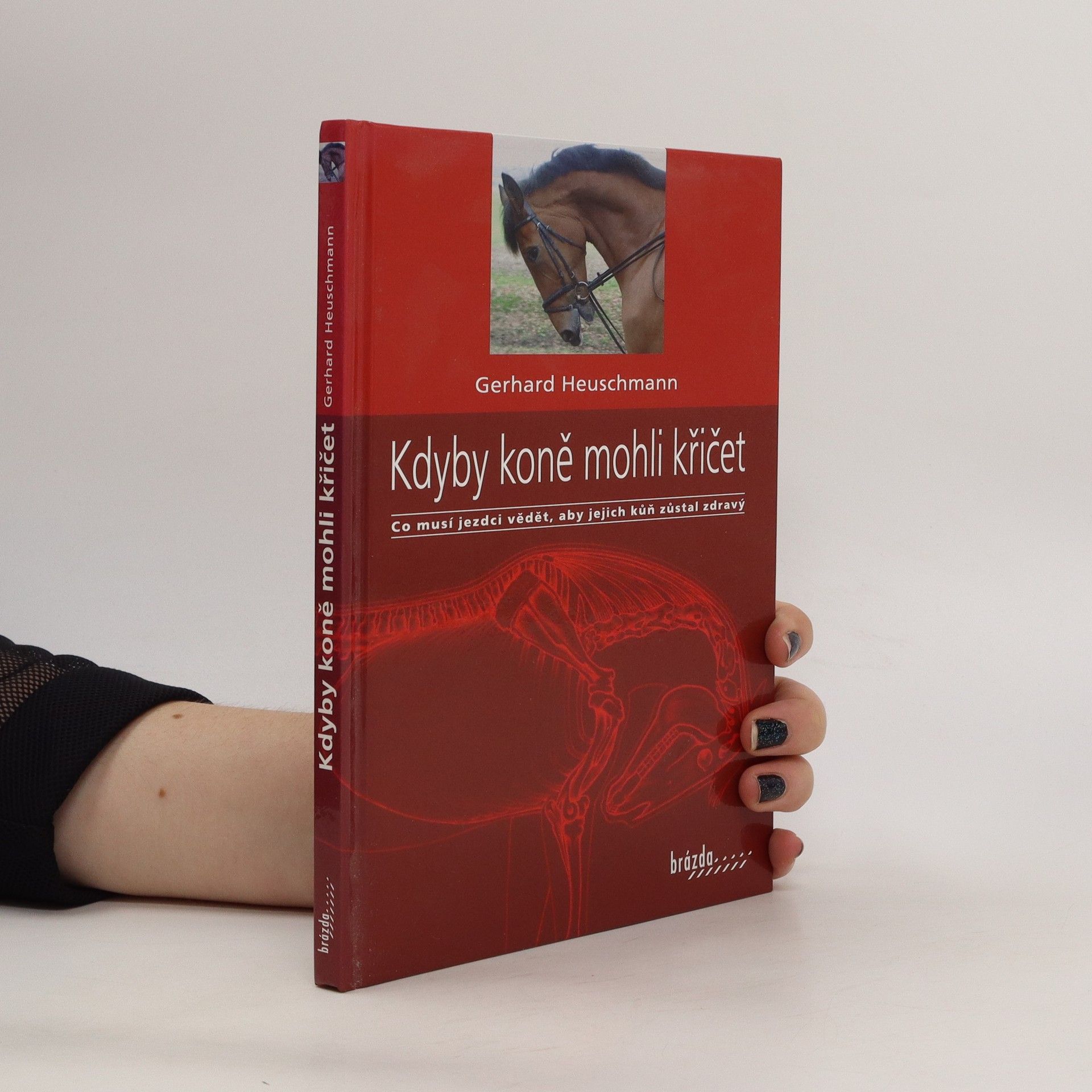Kůň, který s jezdcem spolupracuje a na jeho pomůcky reaguje s důvěrou a radostí, to je důkaz nejvyššího jezdeckého umění. Jak ale mohou jezdci a milovníci koní poznat, které jezdecké metody jsou pro jejich koně zdravé a které dlouhodobě škodlivé? Autor knihy na tuto otázku odpovídá a argumentuje tak, že je zřejmé, co je v jezdectví „špatně“ a co „správně“. Gerhard Heuschmann, zkušený odborný veterinární lékař specializovaný na koně a vystudovaný odborník orientovaný na jezdectví, v ní otevřeně upozorňuje na chybný vývoj sportovního i rekreačního ježdění. Kniha je však mnohem více, než jen kritikou – autor na základě anatomických a fyziologických zákonitostí a četných fotografií dokazuje, jak špatné jezdecké metody trvale negativně ovlivňují zdraví koně. Detailně podaná vysvětlení objasňují, proč se každé jezdkyni a každému jezdci vyplatí připravovat svého koně podle osvědčených principů skutečné klasické jezdecké nauky, díky kterým zůstane zdravý. Určeno všem jezdcům, trenérům, veterin
Gerhard Heuschmann Knihy






Anatomie a biomechanika sestavení a ohnutí
- 102 stránek
- 4 hodiny čtení
Známý veterinář, lektor a autor bestselleru Kdyby koně mohli křičet, Dr. med. vet. Gerd Heuschmann, se v tomto díle věnuje velmi důležitému tématu ve výcviku koně i jezdce. Poprvé zde najdete vysvětlené sestavení a ohnutí koně z anatomického hlediska. Autor upozorňuje na to, proč nelze dosáhnout skutečného shromáždění bez korektního sestavení a ohnutí. Odkazuje se na texty starých mistrů klasického jezdectví a zasazuje je do moderních poznatků biomechaniky koně a jezdce. Obsáhle líčí praktický výcvikový postup, jak dostat koně do horizontální rovnováhy prostřednictvím korektního ohýbání a dále až do shromáždění. Tuto knihu, která by neměla chybět v žádné „koňské" knihovně, doplňují četné historické citáty, fotografie a přesné anatomické kresby.
Kůň, který s jezdcem spolupracuje a na jeho pomůcky reaguje s důvěrou a radostí, to je důkaz nejvyššího jezdeckého umění. Jak ale mohou jezdci a milovníci koní poznat, které jezdecké metody jsou pro jejich koně zdravé a které dlouhodobě škodlivé? Autor knihy na tuto otázku odpovídá a argumentuje tak, že je zřejmé, co je v jezdectví "špatně" a co …
In no uncertain terms, this book asks what it means to be a responsible rider, and whether, in today's society, it is indeed possible for equestrians in any horse sport to put the good of the horse first and foremost, and above ambition and fame. With vibrantly clear illustrations of the horse's anatomy and how it is impacted by various riding techniques, Balancing Act presents proof that, although some steps have been taken to prevent the use of forceful and cruel techniques, many sport horses still perform in pain and discomfort. With fabulous art to help show the anatomy of the horse and multiple examples of poor riding in pictures so that the reader can avoid similar pitfalls, Dr. Heuschmann gives all of us reasons to examine ourselves and those around us through the lens of the horse's welfare. Readers will also find five chapters full of researched and proven recommendations for retraining horses with behavioural or biomechanical issues related to poor training techniques, the tense horse; the rein-lame horse; the horse with gait deviations; the hyperflexed horse; and the unbalanced horse that is completely off the aids. In paperback for the first time with new observations from the author, Balancing Act is for every conscientious horse person intent on riding and training with the good of the horse in mind.
Da Dr. Gerhard Heuschmann in seinem Beruf als Fachtierarzt für Pferde täglich mit Kunden zu tun hat, deren Pferde auf Grund falscher Reitweisen gesundheitliche Schäden davon tragen, möchte er mit diesem Buch aufklären. Ein Pferd ist nicht etwa ein Lebewesen, welches agiert und sich verschiedene Unarten und Verhaltensweisen in der Box für seinen Reiter überlegt. Vielmehr reagiert es auf direkte, richtig oder falsch ausgeführte Einwirkungen seines Reiters. So haben Widersetzlichkeiten, Spannungen und viele körperliche Leiden ihren Ursprung in falscher Einwirkung des Reiters auf sein Pferd. Zu lange und falsche Trainingspläne führen zu körperlichen und psychischen Dysbalancen beim Pferd und damit oft auch beim Reiter. Ist der Teufelskreis einmal geschaffen, kommt man nur schwer wieder heraus. Wir müssen, und dazu möchte ich mit "Finger in der Wunde" beitragen, wieder lernen, vermehrt in das Pferd hineinzuhören um dessen Reaktionen besser interpretieren zu lernen. Dieses Wissen dient Reitern aller Reitweisen, dem Berufs-, Sport- und Freizeitreiter.
Die Anatomie und Biomechanik von Stellung und Biegung
Meilensteine auf dem Weg zur korrekten Versammlung
Die Anatomie und Biomechanik von Stellung und Biegung Der bekannte Tierarzt, Ausbilder und Buchautor der Bestseller Finger in der Wunde und Balanceakt, Dr. Gerd Heuschmann, widmet sich in seinem neuen Werk einem, in der Ausbildung von Pferd und Reiter so überaus wichtigem Thema und zeigt auf, warum es ohne eine korrekte Stellung und Biegung keine wahre Versammlung geben kann. Der Weg von einem Pferd im horizontalen Gleichgewicht hin zu einem versammelten Pferd führt nur über den Weg der korrekten Biegung. Die anatomischen und biomechanischen Hintergründe dieses wichtigen Trainingsbausteins sollen hier erstmals unter der Einbeziehung von Anatomie und Biomechanik schriftlich erläutert werden. Die reiterliche Notwendigkeit, sowie deren Entwicklung sind seit dem 19. Jahrhundert bekannt, das „Warum“ wurde jedoch nicht tiefgründig erklärt. Dieses Werk widmet sich unter anderem folgenden Themen: Warum ein Pferd stellen, warum biegen? Stellung und Biegung in der Klassischen Reitliteratur Die natürliche Schiefe des Pferdes Die Stellung - eine weitere Voraussetzung für eine korrekte Biegung Die Biomechanik der Stellung und Biegung Seitengänge Ein must have für jeden Ausbilder und Reiter!